Exploring Pennsylvania Freestone Stream
Beaver Creek is classified as a Pennsylvania Freestone stream. Streams with that designation typically have the following features: they originate on mountainsides and are fed by seeps, hard rock springs, and runoff. They often have waterfalls and extensive pocket water in areas with a steep drop or a classic pool-and-riffle configuration. Because of low alkalinity, they are less fertile and have very few weeds in the stream.
Beaver Creek has its headwaters about four miles upstream, near Route 40. The Club’s section of Beaver Creek is approximately three-quarters (3/4) of a mile long. The elevation drops by fifty-five (55) feet as it passes through our property. We have installed several check dams that allow us to raise the level of water in several pools. The ability to raise the water level increases the area where we can fish and provides cooler water in the summer.
The following series of photos will take you on a trip along the stream, starting at Weasel Trail and following the water flow to the Bottom Hole. Comments about the left and right side of the stream would be as you look downstream.
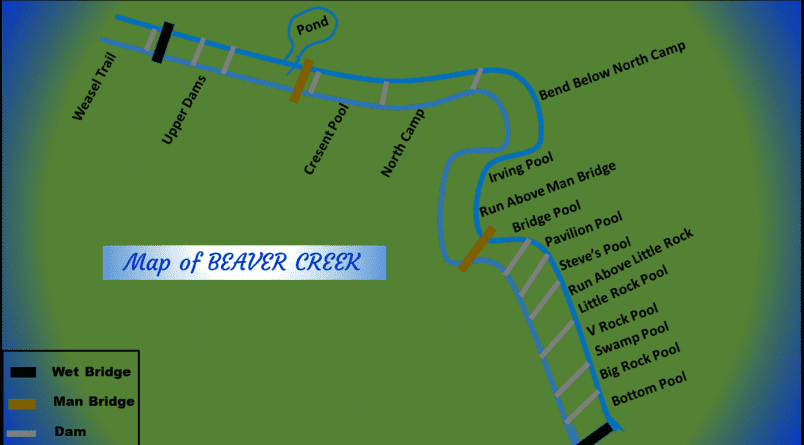

Weasel Trail
This pool is usually fished from the left bank and requires casting to the opposite bank and under the overhanging laurel bushes. The run between the protruding rock and the far bank is an excellent place to fish dry flies. In the spring, the upper section of the pool has a very nice run that will hold fish.
Upper Dams
Fish will hold near the upper side of the dams and in the fast water under the falls. The second dam has a large submerged rock near the middle of the pool; fish will hold in front, behind, and along both sides of the rock. A good cast can put you under the laurel bushes; a bad cast will put you into the laurel.
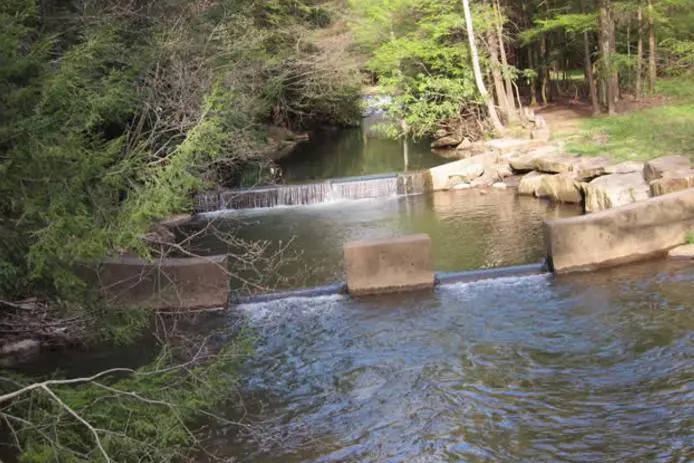
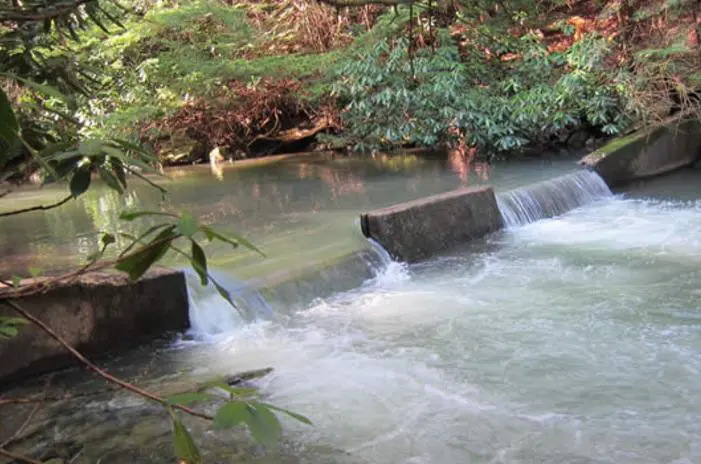
Crescent Pool
This photo does not show the upper section of the pool, which makes a sharp turn to the right, naming this pool the crescent pool. The upper section of this pool is usually a good place to try your dry flies. The lower section requires a good cast to get your fly under the low-hanging laurel on the opposite side.
North Camp
This pool is fished from the right bank and requires casting to the far bank. There is a large submerged log placed alongside the opposite bank at the midpoint of the pool that provides a good hiding place for the trout. Not seen in this photo is a concrete spillway that provides a place for someone in a wheelchair to fish.
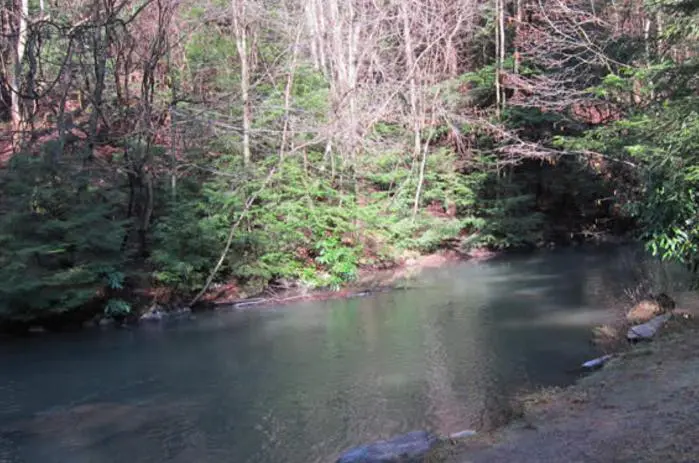

Bend Below North Camp
The waterfalls at the start of this pool have attracted our better nymph fishermen. Those fishing with wooly buggers have more success casting across the pool and drifting their fly along the far bank.
Irving Pool
This pool is usually reached by walking downstream to the bridge and fishing from the left side of the stream. Fishing from the left and trying to get your fly to the far bank without losing your fly is challenging. Jack Bogut named this pool after he spent an afternoon unsuccessfully trying to catch “Big Irving.”
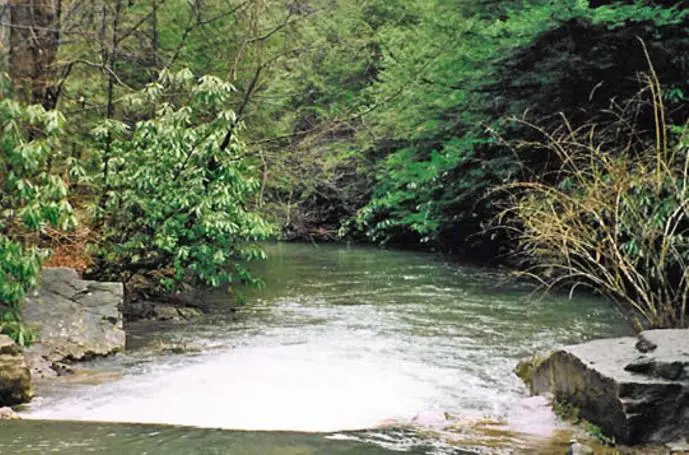

Run Above the Bridge
This section is fished from the right bank and requires casting under the laurel. The water is fairly shallow but has enough rocks to give the fish a good place to hide. Dry fly-fishing in this area late in the summer will produce some fish.
Bridge Pool
Most fishermen park their cars, rig up, and walk to the bridge to check out the stream. If they decide to fish in the bridge pool, they have many options. Some will cross the bridge and fish under the bridge or run above the bridge. Others will stay on the left side of the stream and cast alongside the far bank. This pool usually has rising fish, causing most fishermen to stop and try their luck.
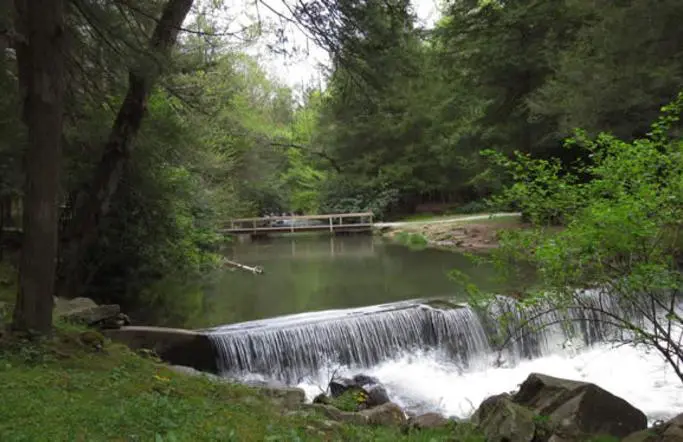
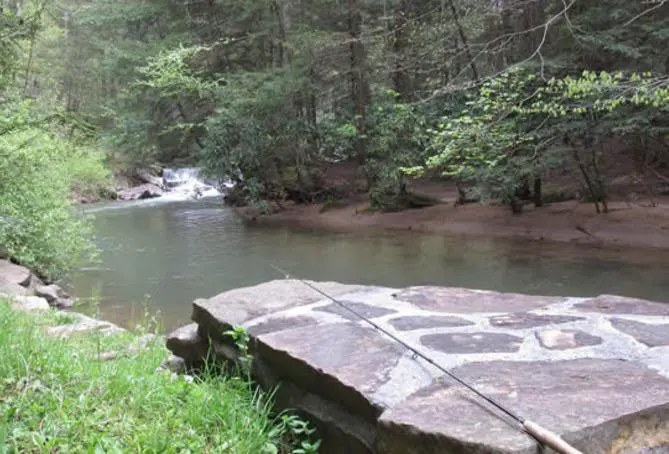
Run Below the Bridge
This run can be fished from either side. If you fish from the left side, you must have waders to get out from under the laurel, which enables one to fish the opposite bank and the section just before the dam. You are also very close to the best part of the run, where fish come up for a dry fly. This is Ed Onderick’s favorite section of the stream; he hopes someday to catch a trout in this run.
Pavilion Pool
It should be no surprise to learn that you have to fish from the right bank and cast to the opposite bank along the rocks and logs that provide a hiding place for the fish. Near the tail end of the pool, the fish like to stay in the shade of a hemlock tree. In high water, the fish seem to like the near side of the steam.
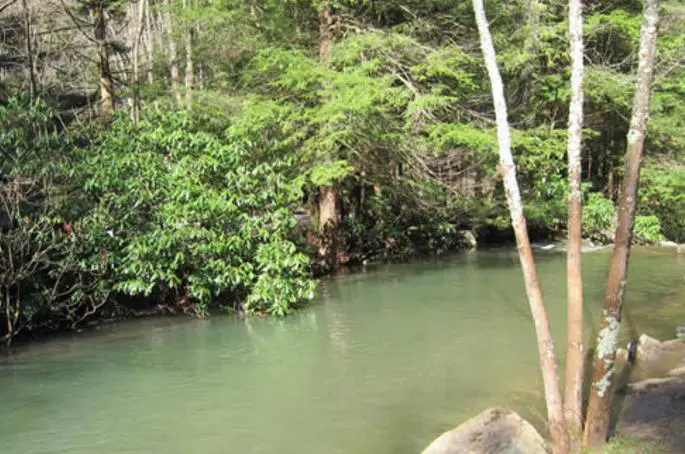

Steve's Pool
This pool has a wide and consistent bottom, providing a fine area for dry fly-fishing. The pool was named for Steve Peary, who liked to fish his dry flies while sitting on a rock, which has now been replaced by a bench. Fish can be seen anywhere in this pool. A large rock near the left corner of the dam usually holds the largest fish that can be induced to hit a wooly bugger.
Run Above Little Rock Pool
A large waterfall, from Steve’s pool, creates a deep pool and then shallows out to yield several small pockets of water deep enough to hold fish. A dry fly fished among the rocks will attract brown trout.
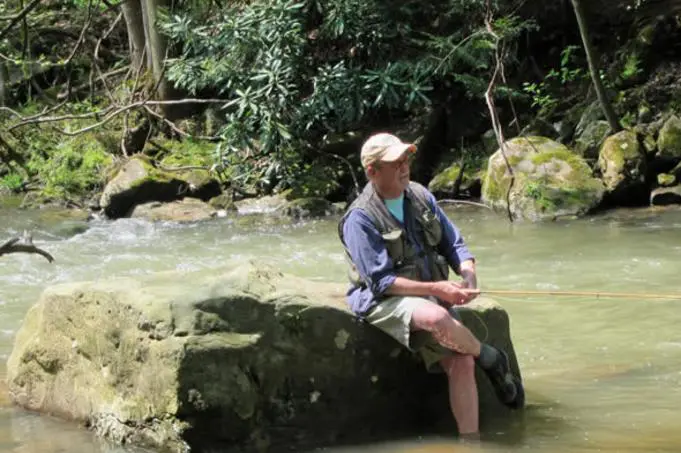
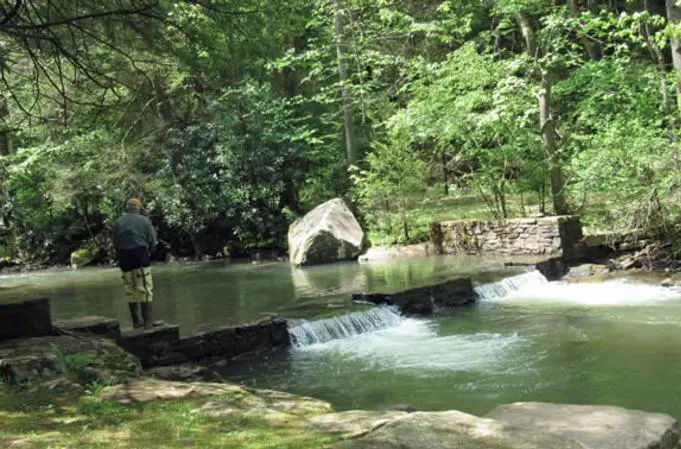
Little Rock Pool
This pool starts with fast water and gradually gets deeper as it approaches the dam. A nice current runs alongside the rock and is plenty deep to hold the largest trout in this section. There is a small crevice in the rock that often holds trout. Many nymph fishermen wade into the stream and high-stick their flies.
V-Rock Pool
This pool begins with the water that comes from the “little rock pool” and has created some deep pockets. This is usually fished from the right bank, and a cast alongside the rocks on the opposite bank can also see action. This pool can also be fished downstream from the “Little Rock” dam.
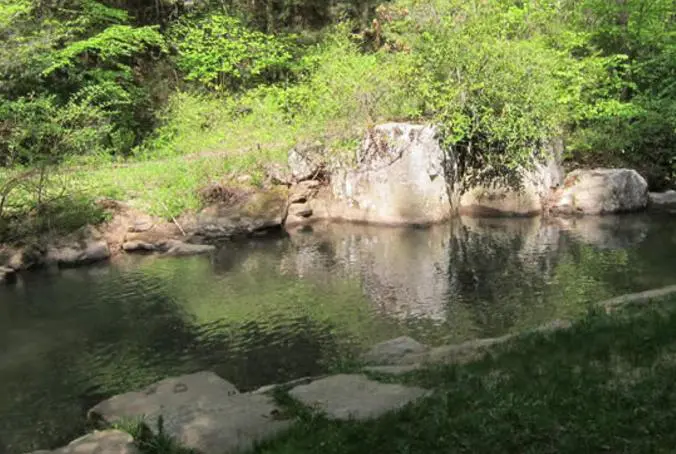
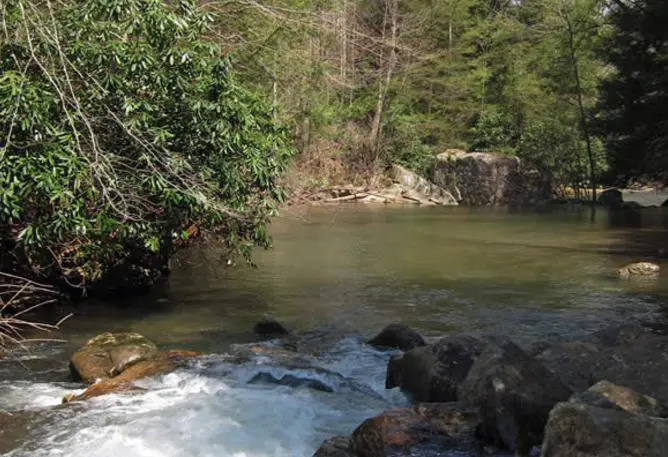
Swamp Hole
To fish this hole, you must have hip boots or waders. A fisherman must wade to a sandbar to properly cast under the laurel and under an overhanging tree near the middle of the pool. At times, fish will hold near the top where the water is coming from the V-Rock or at the bottom of the hole before flowing into the Big Rock pool.
Big Rock Pool
This is probably the most picturesque hole on the stream. It usually holds the most fish that can be seen on most days. Any cast alongside the big rock will certainly get the attention of several trout. The partially submerged rock near the dam usually has fish under the rock. Fish are also held above and along the dam.

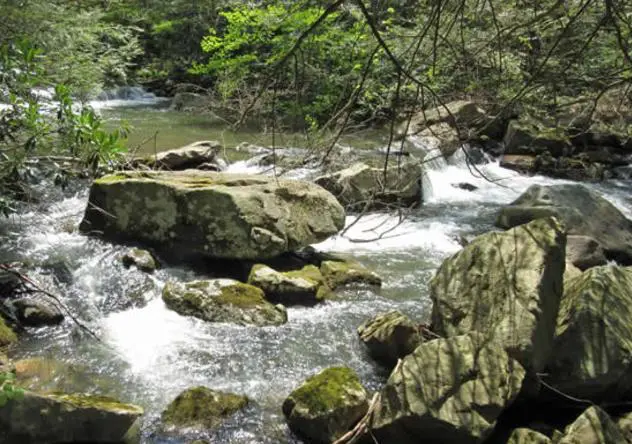
Run Below Big Rock Pool
This large section of the stream is mostly pocket water with several places for holding fish. Dry fly-fishing in this area can be a lot of fun.
Bottom Hole - Upper Section
As the water gets into the bottom pool, a deep pocket is formed under the waterfall that can be fished from below. Nymphs and streamers are very effective in this area. Large rocks and overhanging laurel and hemlocks add some degree of difficulty to your cast.


Bottom Hole - Lower Section
All rocks and areas with overhanging bushes provide great cover for the fish. The large rock making the left bank near the dam holds many fish. The quiet water between the last rock and the dam will hold trout. This section can only be fished from the right bank or from the dam. The Club's property ends at the spillway. Do not attempt to fish below the spillway dam or walk across the stream below the dam.